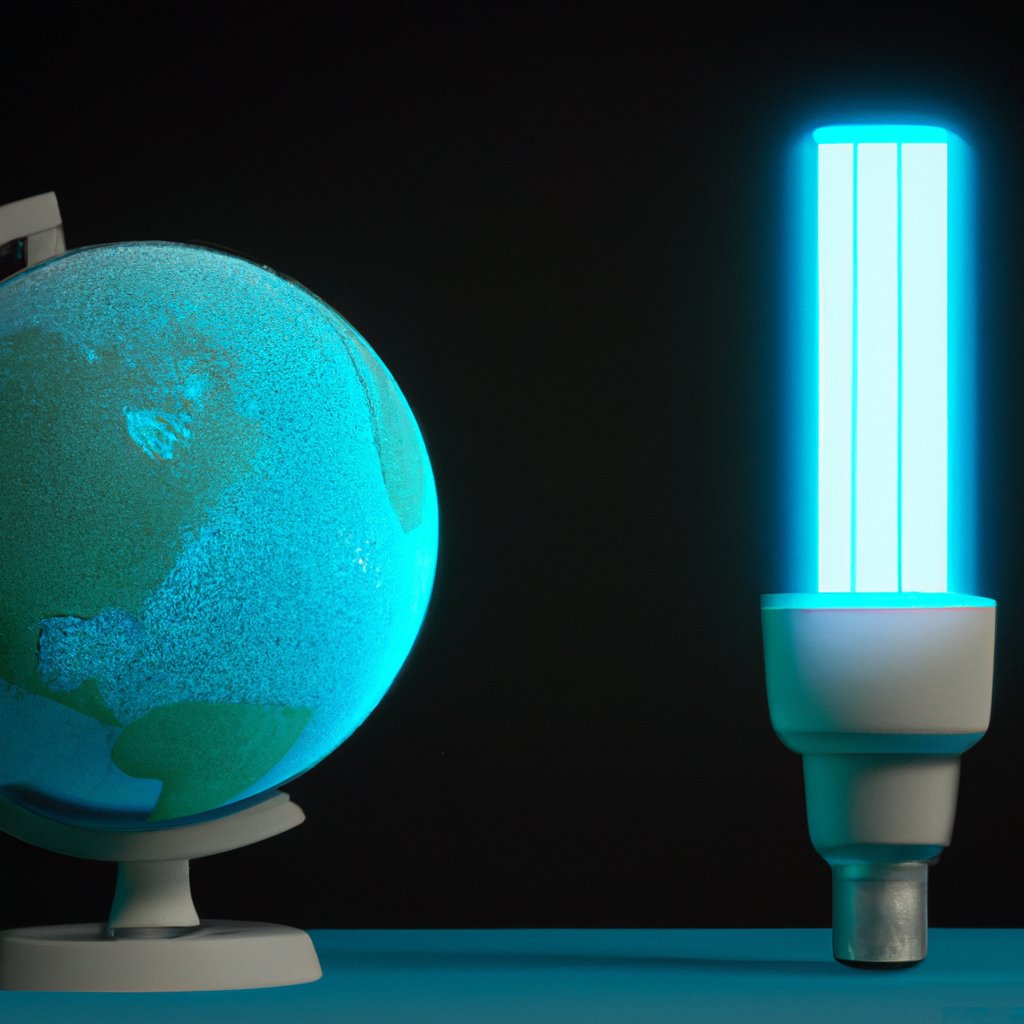How 222nm Far UV-C Light will help create a more Sustainable Future
Is there a technology that can mitigate the world’s reliance on unsustainable chemicals to clean indoor environments and even our drinking water supplies? The recent SARS-CoV-2 pandemic resulted in increased attention to air and surface hygiene in indoor environments, two of the factors with the greatest impact on human health. EPA studies of human exposure to air pollutants indicate that indoor levels of pollutants may be two to five times — and often more than 100 times — higher than outdoor levels. These levels of indoor air pollutants are of particular concern as the average person spends 90 percent of their time indoors. As reported by the World Health Organization, indoor air pollution, such as that represented by dampness and molds, chemicals, and other biological agents, is a major cause of morbidity and mortality worldwide [8]. These chemicals and biological agents increase the risk of developing respiratory and neurologic symptoms, allergies, asthma, and lung cancer. To preserve high levels of IAQ, air, and surface sanitization methods that use sanitizing chemicals, such as ozone, peroxygen compounds, or bleach are currently used [8]. Such products and compounds, besides being appreciated above all for their high effectiveness in eliminating microbial contaminants, are feared for their ability to generate by-products today mostly classified as toxic [8] and/or carcinogenic by the International Agency for Research on Cancer (IARC) Foundation.
Another significant disadvantage of the use of chemical products is their reduced eco-sustainability and their high environmental impact, a risk factor as significant for human health as for the balance of ecosystems. Just ask yourself, how many plastic bleach bottles are in our oceans? Even HEPA filters have limits of use regarding the need for frequent replacement by trained personnel and their ability to become a survival or growth substrate for bacteria and molds [8]. Sustainable disinfection is found in 222nm Far UV-C light. It is necessary for the biological safety of humans living indoors to consider that 222nm UV-C light offers a safe and sustainable alternative.
One of the benefits of 222nm Far UV-C is that it can sanitize infectious bacteria without the use of chemical cleaners. This could be a potential alternative to traditional disinfection methods which often involve the utilization of chemicals that could have a negative effect on the environment. This could be further elaborated as Far UV light has been shown to be effective at killing viruses, including the flu and common cold, as well as bacteria such as E. coli and Bacillus. Utilizing Far UV could allow the reduction of spread across areas with a high risk of infections including hospitals, schools, and homes.
Moreover, 222nm Far UV light can also be an alternative source for water purification. As traditional water treatment methods rely on unsustainable chemicals such as chlorine to kill bacteria, protozoa, and other contaminants, these chemicals can have negative impacts on the environment, and human health, and chlorine contaminates water supplies. [9] Exposure to low levels of chlorine can result in nose, throat, and eye irritation in humans. At higher levels, breathing chlorine gas may result in changes in breathing rate and coughing, and damage to the lungs. Additional symptoms of exposure to chlorine can be severe. Workers may be harmed from exposure to chlorine. By utilizing 222nm Far UV lamps that do not contain mercury as an alternative for water treatment, water can be purified without the use of chemicals.
Furthermore, Far UV light also has the potential to be used as an alternative to traditional pest control/crop protection methods. As pesticides and other chemical-based pest control methods can have negative effects on the environment, 222nm Far UV light can be utilized to kill insects such as mosquitoes and flies without the use of chemicals. This allows 222nm Far UV-C light to be the most sustainable option for pest control in outdoor spaces, indoor vertical farming, greenhouses, and other controlled environments where pesticides may not be safe to use, and are unsustainable.
In addition to its potential applications in disinfection, water treatment and pest control, 222nm Far UV light also has the potential to be used in the production of certain materials. An example includes the use of Far UV light in the process of curing synthetic resin, which is used in the production of many plastic products. This could potentially lead to more sustainable production processes for a variety of industries.
Overall, 222nm Far UV light is a promising technology that has the potential to be a sustainable alternative in a variety of applications. This is due to the reduced energy consumption, the higher lifeline of 30,000 hour 222nm lamps, and the absence of mercury, 222nm Far UV-C represents a valid eco-sustainable alternative for indoor sanitization. The use of Far UV-C lamps is particularly advantageous, both on a hygienic and ecological level, in replacement of the most common chemical sanitization methods and, in comparison, to common vapor mercury UV-C lamps in the sanitization of air and surfaces in confined environments. While it is not a replacement for traditional methods, it has the potential to be used in conjunction with other traditional methods to reduce the negative impacts on the environment and promote sustainability. As research and development of Far UV technology continue, it is possible that more potential applications and benefits in the future will be developed.
- Steve Grabenheimer
222nm far-uvc light for sale - https://covspect.com/bio-store/sterilray
References:
1) (Ultraviolet (UV) Radiation) https://scied.ucar.edu/learning-zone/atmosphere/ultraviolet-uv-radiation
2) (Disinfecting the air with far-ultraviolet light) https://www.nature.com/articles/d41586-022-03360-w
3) (Ultraviolet disinfection of drinking water)
https://ww2.health.wa.gov.au/Articles/U_Z/Ultraviolet-disinfection-of-drinking-water#:~:text=Yes.,are%20not%20able%20to%20penetrate.
4) (Potential of far ultraviolet (UV) 222 nm light for management of strawberry fungal pathogens)
https://www.sciencedirect.com/science/article/abs/pii/S0261219421002611?via%3Dihub
5) What are Plastic Resins? http://www.plasticservice.com/industry-news/1039/what-are-plastic-resins
6) Radiation: Ultraviolet (UV) radiation https://www.who.int/news-room/questions-and-answers/item/radiation-ultraviolet-(uv)
7) https://www.epa.gov/iaq-schools/why-indoor-air-quality-important-schools#:~:text=EPA%20studies%20of%20human%20exposure,times%20%E2%80%94%20higher%20than%20outdoor%20levels.&text=These%20levels%20of%20indoor%20air,percent%20of%20their%20time%20indoors.
8) file:///C:/Users/HP/Downloads/atmosphere-13-01411-v2.pdf
9) https://www.cdc.gov/niosh/topics/chlorine/default.html#:~:text=Exposure%20to%20low%20levels%20of,harmed%20from%20exposure%20to%20chlorine.



